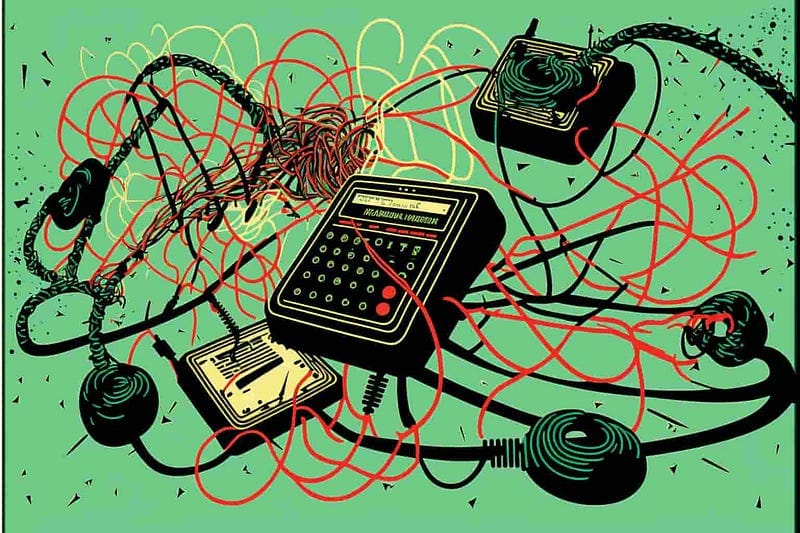Break the Cycle of Instant Communication in the Workplace
Stop the madness of notifications, noise, and the pressure to respond.

We’re hit from all sides during the workday. Emails, Slack messages, texts, and other forms of communication. Couple that with endless meetings and it can feel like the brink of insanity.
While remote work may have curbed the office “drive-by” (someone stops by your desk just to chat), those interruptions now take place in virtual form. And they’re a productivity killer.
Context switching is the process of switching between unrelated tasks — and it has a huge impact on your ability to focus. According to a joint report from Qatalog and Cornell University’s Idea Lab, it takes 9.5 minutes to get back to a productive state after switching between digital apps. How many times do you look at Slack during the day? Yikes.
Even if you work in a company that emphasizes instant communication, there are things you can do to protect your time and productivity. And if you’re a manager, you have additional opportunities to make communication less chaotic for your team.
1. Determine the priority of a request
An email or Slack message comes in with a request to complete a task. “Can you create this report?” “Can you look up some information about a client?”
It’s tempting to respond to the request immediately. But odds are, you had other work planned. Even if the request is seemingly quick, it’s still a distraction.
Start by asking the sender: When does this need to be done?
That detail is often missing from most communication, especially for small tasks. We assume the task is urgent, but that may not be the case. Or, we’re so used to addressing emails as soon as they come in that it feels natural to switch gears.
By asking for a timeframe, you can prioritize the task among other things on your plate. Maybe it is urgent, and then you’ll shift your work around. But maybe the sender doesn’t need the report for a few days — giving you the ability to set it aside for now and come back to it later.
Not everything is urgent. If you’re expected to drop everything at the whims of other people, it’s a sign of workplace toxicity. You’ll constantly feel the stress of being pulled in multiple directions and rarely have time to get your actual work done.
If you change your default response from “yes” to “I need more information” you’ll be able to protect your time better. You can also renegotiate delivery dates if you have multiple tasks with competing deadlines. Tell the sender that you can complete the task by X date, but then you’ll need to move another task to Y date.
2. Preface your communication with “non-urgent”
You’re probably guilty of sending similar communication to your team. “Hey, quick question….” But even the quickest of questions require context switching.
You can help your colleagues out by letting them know that your request is non-urgent. Sending a Slack message? Start with the words NON-URGENT and then continue with the rest of the message. If someone is briefly glancing at missed messages, they’ll know that they can come back to yours later. This helps with communication that isn’t really a task or a demand on someone’s time, but a quick back-and-forth.
The problem with the quick back-and-forth is that it requires synchronous communication. Both people need to be available to engage. And maybe the other person is caught up in other work.
NON-URGENT sends a signal that the communication can happen asynchronously. You’ve moved on to other work and will check back later.
Managers can de-emphasize the “tasks” of work during 1:1 meetings with direct reports. These check-ins should be about how the person is doing, not the list of work to be done.

3. If you need time to think through a response, say so
Not everyone thinks fast on their feet. This is especially true for neurodivergent people: it’s not that they don’t have ideas, but they need more time and space to process thoughts before responding.
Too often, the “winner” of a conversation goes not to the person with the best idea, but the person who is the loudest and replies the fastest. That is bad for organizations as a whole.
If you need time to think, say so. Acknowledge the message by saying, “I have gotten your request. I’m going to think about it for X amount of time and circle back with you.” Unless the person is completely unreasonable, saying that you need time to respond thoughtfully shows that you care about the work.
Sometimes, you won’t have the benefit of additional time (for whatever reason). In that case, it helps to have an organized system of notes on different topics. At least you can sift through your notes, rather than frantically trying to compile information for an immediate reply.
4. Guard your time for deep work
If you constantly shift between activities, you won’t have time to actually get your job done. After all, emails, Slack messages, etc. — are only one part of most jobs. You need time to do your work without the constant interruption of communication.
Cal Newport, the author of the book Deep Work, says:
“A 40 hour time-blocked work week, I estimate, produces the same amount of output as a 60+ hour work week pursued without structure.”
Block off time in your day for your deep work. Set aside 60 or 90 minutes and refuse to check your messages. It will be hard at first, especially since we’re so wired to let notifications dictate our attention. But you’ll be far more productive because you won’t have any context-switching during that block of time.
Then set aside another block of time to reply to communication. You know you’ll be bouncing between multiple apps or threads. But use the other techniques (determining priority, asking for more time) to get through as much communication as possible, saving some of the work for later.
Plan your deep work for a time of day when you’re most productive. The rest of the communication is likely less brain-intensive, so you can reply after you’ve devoted your energy to your most important work.
If it makes you anxious to let 60–90 minutes without replying, think of it this way: you couldn’t respond if you were in a meeting in an office conference room. You couldn’t reply if you were on a long call with a client. No one would question why you hadn’t answered within 5 minutes.
Your deep work is a meeting with yourself.
Break the old communication habits
Context switching is killing our productivity. And the increased use of Slack, texts, and other forms of instant communication has only made it worse.
On top of that, remote work has inadvertently led to a rise in virtual presenteeism. Employees feel the need to be always present online — even if they would have otherwise drawn boundaries. In an office, it was easier to send signals that you didn’t want to be bothered, like closing an office door or putting on headphones.
But it’s possible to reduce the reliance on instant communication using these tips. Work will feel less frantic and less all-consuming. Most importantly, you’ll regain your focus time.
Check out my free guide for tips on using time-blocking to manage your day.






